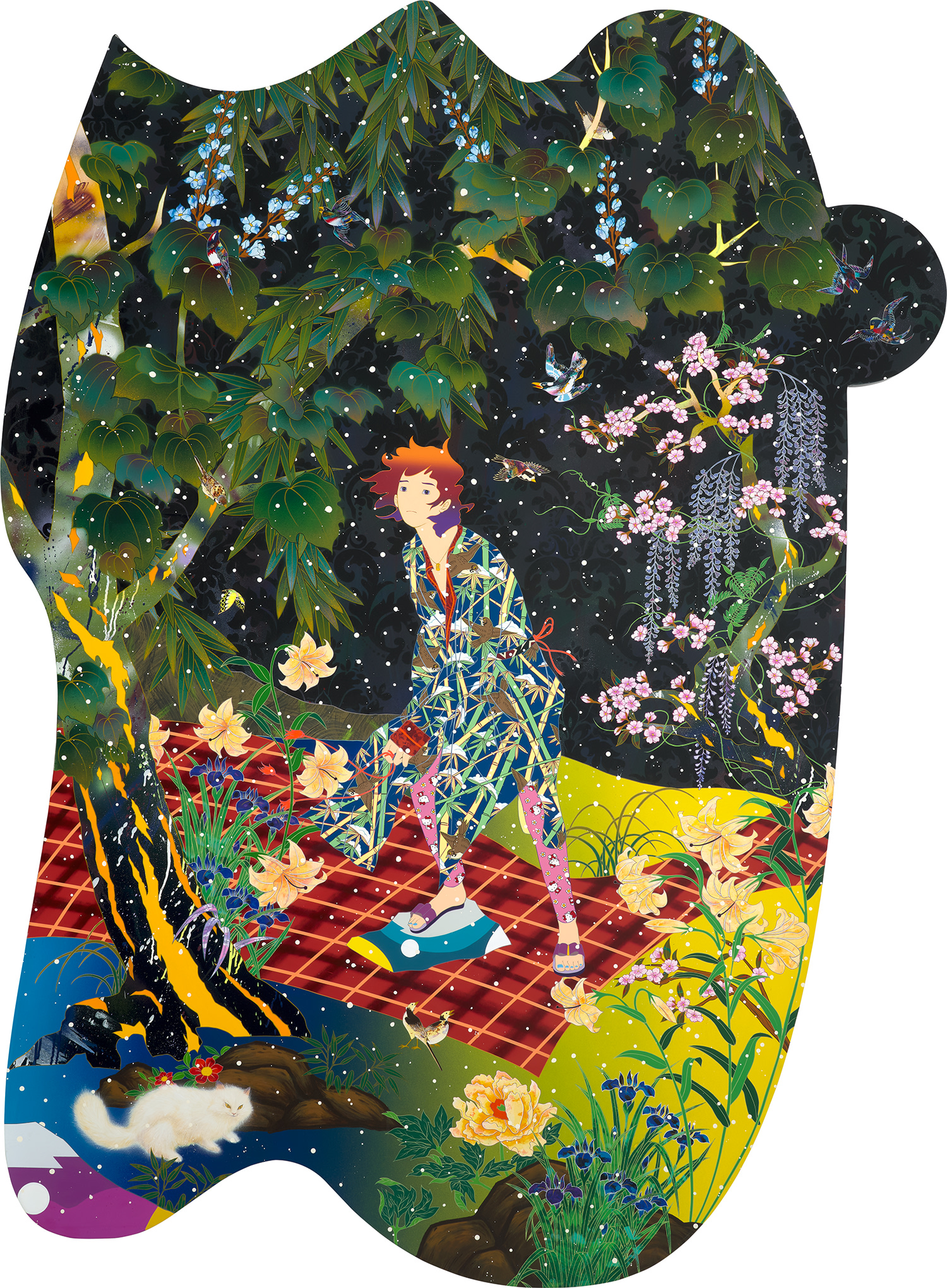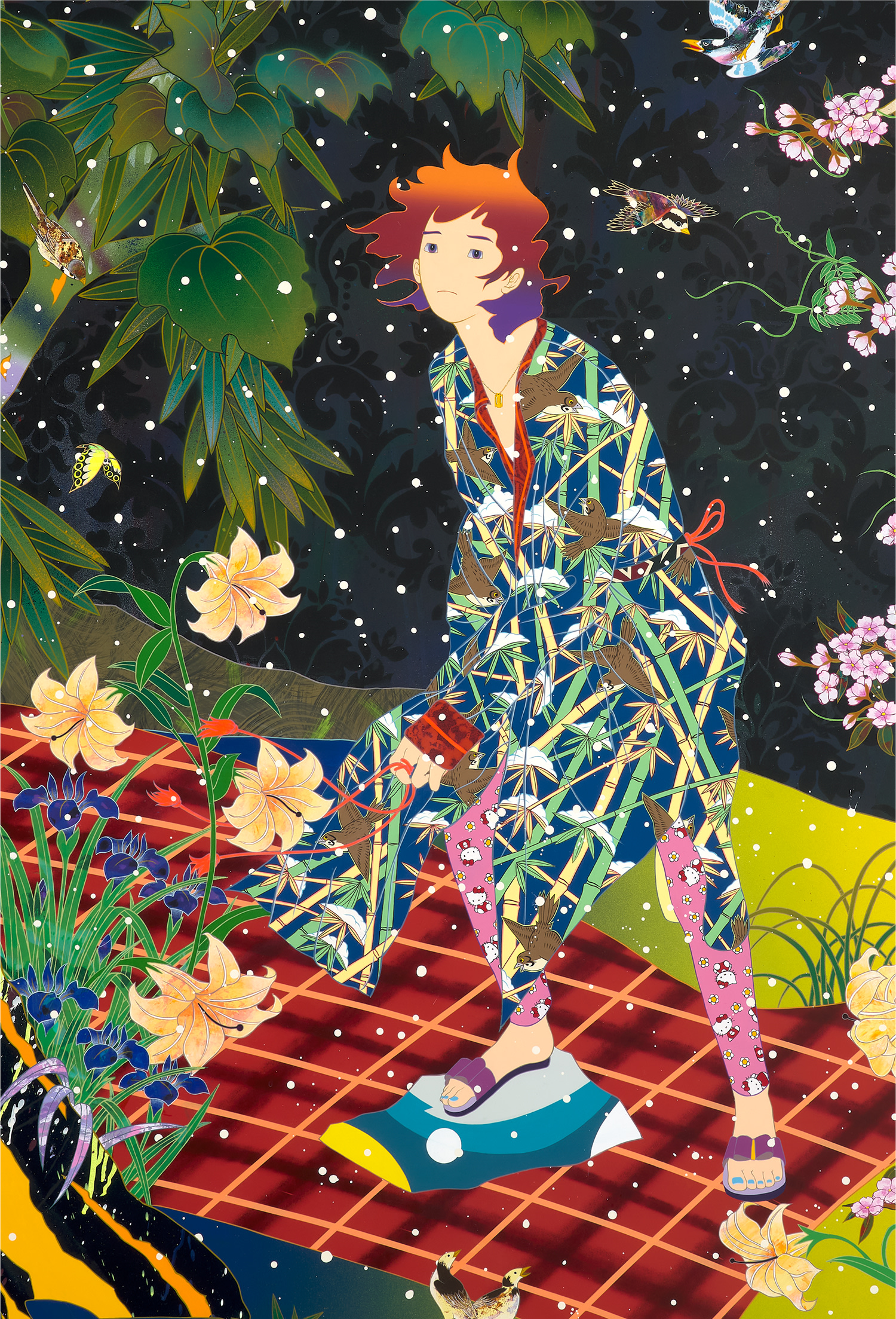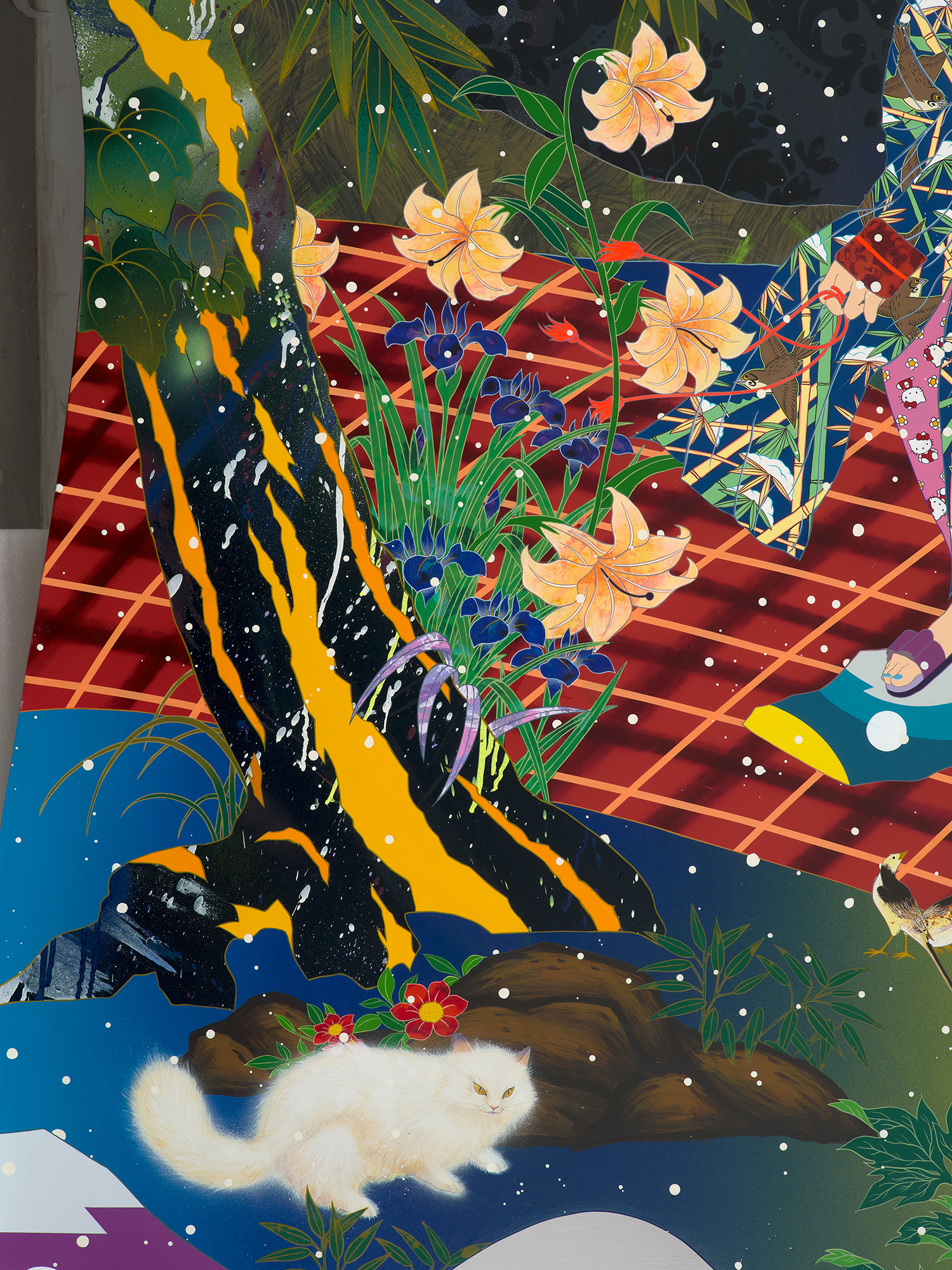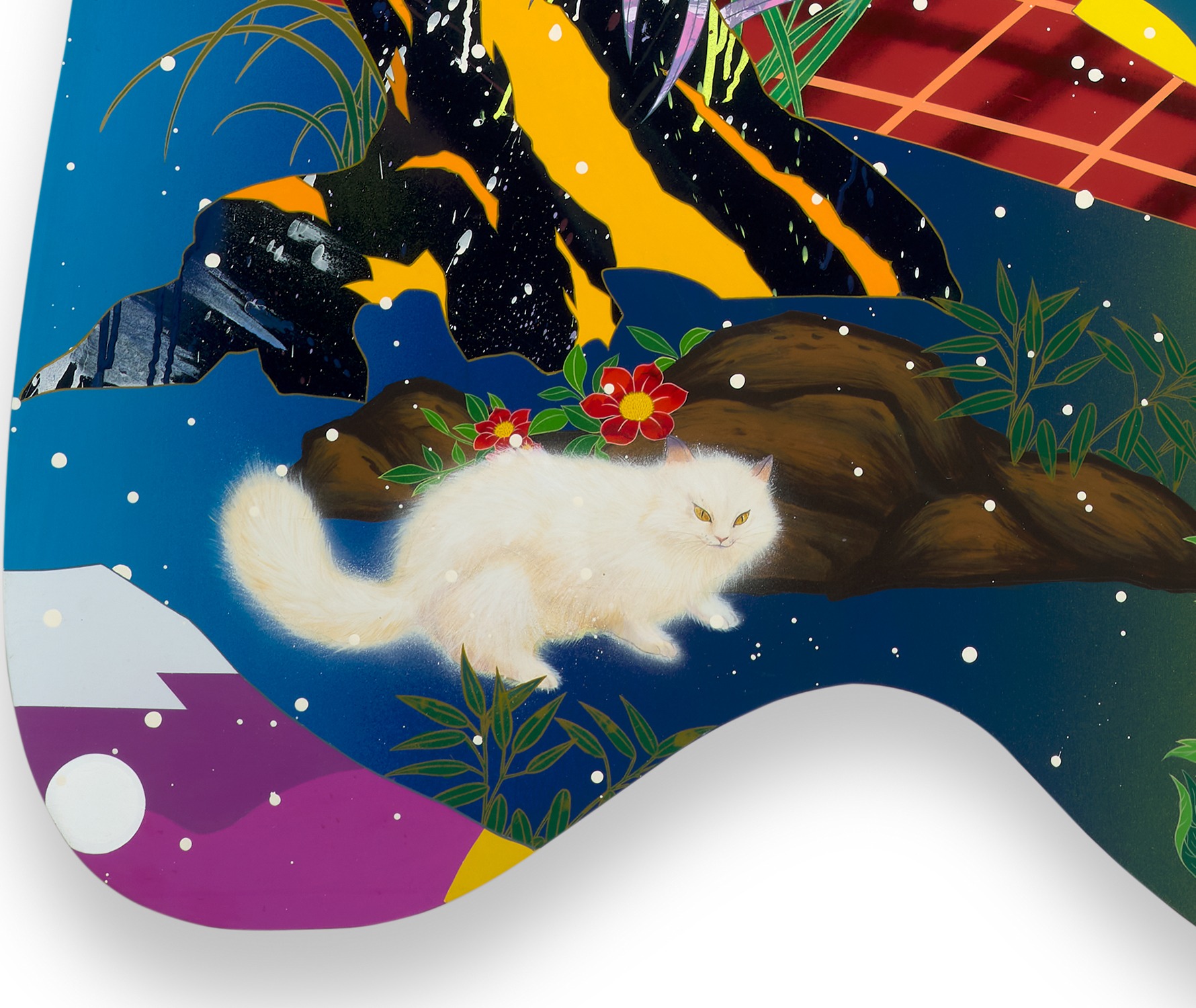











27
Tomokazu Matsuyama
Daylight In My Place
signed, titled, inscribed and dated '"Daylight In My Place" 8. 2019 NYC Tomokazu Matsuyama [in English and Kanji]' on the reverse
acrylic and mixed media on canvas
254 x 185 cm. (100 x 72 7/8 in.)
Executed in 2019.